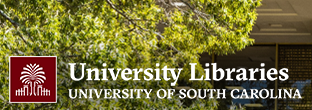NS-5 Synthesis of Glycoconjugated A3B Phthalocyanines for Photodynamic Therapy Applications
SCURS Disciplines
Chemistry
Abstract
Introduction/background:
Photodynamic Therapy (PDT) is a type of phototherapy that has found possible applications as cancer treatment, antimicrobial, and anti-viral. PDT utilizes a light-activated molecule, typically referred to as a photosensitizer, which is responsible for generating the cytotoxic species that lead to the desired biological activity. Common photosensitizers consist of porphyrins and chlorins; however, phthalocyanines present promise as a photosensitizer due to their ability to absorb light at a clinically relevant wavelength, allowing for deeper penetration into tissues.
Hypothesis/Goal of Study:
The goal of this study is to develop glycoconjugated phthalocyanines containing various carbohydrates. Ultimately, we endeavor to create a library of phthalocyanine glycoconjugates to study the nature of the carbohydrate and how this impacts the molecule’s phototherapeutic potential.
Methods and Results:
Throughout our research, we have explored various methods of making monofunctionalized glycoconjugated phthalocyanines, with one route proving to be more effective. In this route, a mono-alkynylated phthalocyanine is created through a mixed condensation reaction using a mixture of two phthalonitriles. The resulting statistical mixture creates a significant challenge in the purification and characterization of the products. However, utilizing automated flash chromatography, we have been able to purify the resulting mixture of phthalocyanines (A4, A3B, A2B2, AB3, B4) and isolate the desired A3B symmetry which represents the mono-alkynylated phthalocyanine suitable for glycoconjugation. Using this alkyne group, glycoconjugation was performed through a copper-catalyzed azide-alkyne cycloaddition or ‘click’ reaction.
Discussion/Conclusions:
Using the discussed synthetic route, a small library of glycoconjugated phthalocyanines with various carbohydrates was developed. These carbohydrates include N-Acetylglucosamine, N-Acetylgalactosamine, and lactose. Further work will be discussed.
Acknowledgements:
This work was supported by funding through SC INBRE/NIH (P20GM103499-20) and an NIH R15 award (1R15GM148916-01).
Keywords
Natural Sciences
Start Date
11-4-2025 3:40 PM
Location
CASB 117
End Date
11-4-2025 3:55 PM
NS-5 Synthesis of Glycoconjugated A3B Phthalocyanines for Photodynamic Therapy Applications
CASB 117
Introduction/background:
Photodynamic Therapy (PDT) is a type of phototherapy that has found possible applications as cancer treatment, antimicrobial, and anti-viral. PDT utilizes a light-activated molecule, typically referred to as a photosensitizer, which is responsible for generating the cytotoxic species that lead to the desired biological activity. Common photosensitizers consist of porphyrins and chlorins; however, phthalocyanines present promise as a photosensitizer due to their ability to absorb light at a clinically relevant wavelength, allowing for deeper penetration into tissues.
Hypothesis/Goal of Study:
The goal of this study is to develop glycoconjugated phthalocyanines containing various carbohydrates. Ultimately, we endeavor to create a library of phthalocyanine glycoconjugates to study the nature of the carbohydrate and how this impacts the molecule’s phototherapeutic potential.
Methods and Results:
Throughout our research, we have explored various methods of making monofunctionalized glycoconjugated phthalocyanines, with one route proving to be more effective. In this route, a mono-alkynylated phthalocyanine is created through a mixed condensation reaction using a mixture of two phthalonitriles. The resulting statistical mixture creates a significant challenge in the purification and characterization of the products. However, utilizing automated flash chromatography, we have been able to purify the resulting mixture of phthalocyanines (A4, A3B, A2B2, AB3, B4) and isolate the desired A3B symmetry which represents the mono-alkynylated phthalocyanine suitable for glycoconjugation. Using this alkyne group, glycoconjugation was performed through a copper-catalyzed azide-alkyne cycloaddition or ‘click’ reaction.
Discussion/Conclusions:
Using the discussed synthetic route, a small library of glycoconjugated phthalocyanines with various carbohydrates was developed. These carbohydrates include N-Acetylglucosamine, N-Acetylgalactosamine, and lactose. Further work will be discussed.
Acknowledgements:
This work was supported by funding through SC INBRE/NIH (P20GM103499-20) and an NIH R15 award (1R15GM148916-01).

